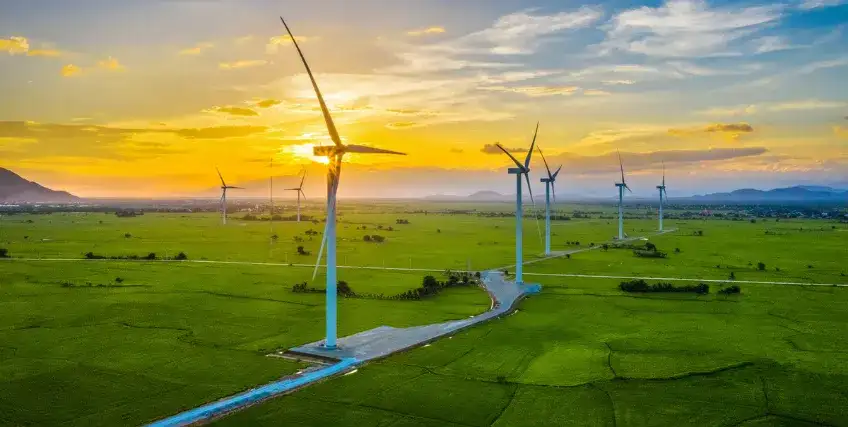Challenges in Green Funds Loans Implementation: Barriers and Solutions
October 14, 2025 | Last Updated on: October 14, 2025

Green funds loans are loans whose proceeds are explicitly used to fund sustainable or low-carbon projects. These are becoming central to U.S. efforts to decarbonize construction and real estate. Yet despite the promise, many hurdles still slow adoption by borrowers, lenders, and financial institutions.
This article explores the challenges of implementing green funds loans and provides practical solutions to help borrowers and lenders thrive in green and sustainable finance
Why Green Funds Loans Can Be Important
Green funds loans are pivotal for financing the transition to sustainable development in the U.S. They allow developers, small businesses, nonprofits, and real estate owners to invest in energy efficiency, renewable energy, and low-emissions construction.
- They help reduce operating costs (for example, via lower energy use).
- They deliver environmental benefits, such as reduced emissions and improved air quality.
- They advance climate action by channeling capital to projects that mitigate climate change.
- They mobilize green finance and clean energy financing in sectors traditionally tied to high carbon intensity.
America’s federal government already supports these efforts. The U.S. Department of Energy’s Loan Programs Office (LPO) has closed over $30 billion in clean energy and infrastructure financing deals over the past decade. Under its Title 17 Clean Energy Financing Program, LPO can provide loans or guarantees to deploy innovative energy, state-supported, or infrastructure reinvestment projects.
Yet, simply having a federal vehicle doesn’t eliminate the barriers that beset green funds loans in practice.
Barriers to Effective Implementation of Green Funds Loans
Below are some of the key obstacles that borrowers, lenders, and financial institutions face when trying to use green funds loans in the U.S.
1. Regulatory Ambiguity
- There is a lot of confusion about what qualifies as “green” as there is no federal standard in the U.S. that defines the criteria. Different states, cities, and lenders use varying definitions, which creates this ambiguity.
- Projects may have to satisfy multiple overlapping rules like local zoning, building codes, state incentives.
- The Green Loan Principles (GLP) are the globally accepted voluntary guidelines, but their adoption in the U.S. is uneven.
- For instance, a green loan’s use of proceeds might require third-party verification in some jurisdictions but not in others.
2. Knowledge Gaps and Lack of Technical Capacity
- Many borrowers do not understand how to structure a green loan or how sustainability upgrades translate to financial savings.
- Lenders and credit analysts often lack the knowledge to underwrite green projects, especially energy upgrades, solar power, or emissions mitigation measures.
- It is often hard to model future energy savings or forecast carbon reductions without detailed engineering studies.
- The absence of standard metrics or ESG benchmarking makes the credit risk assessment more subjective.
3. High Up-Front Capital Costs and Risk Perception
- Green upgrades, like better insulation, solar panels, advanced HVAC systems, carry a higher up-front cost compared to typical construction components.
- Many lenders view these projects as experimental or risky, especially if the technology is less established.
- Payback periods can be long (5–15 years or more), making it harder to justify from a short-term credit viewpoint.
- Some borrowers hesitate because the interest rates or chance of default are perceived as higher.
4. Verifying Performance, Data & Reporting
- Once a green project is built, it must deliver on energy savings, emissions reductions, or sustainability claims. Tracking or measuring that performance becomes difficult.
- Weak or missing data infrastructures can hamper ESG reporting and the ability to tie loan repayment to actual environmental outcomes.
- Without solid verification, lenders may distrust loan proceeds usage or project outcomes.
5. Limited Product Variety and Accessibility
- Many financial institutions still do not offer loans tailored to green projects or energy upgrades.
- Small businesses and nonprofits often find themselves excluded from green financing or loan fund programs, due to scale, credit profiles, or complexity.
- Many green funds loans today, focus on large or utility-scale projects, leaving building-scale and small business projects underserved.
6. Incentive Misalignment
- In commercial real estate, owners may pay for the upgrades, but tenants enjoy the energy savings (a “split incentive”). That weakens the repayment case.
- Borrowers may hesitate if they cannot capture the financial returns from lower energy bills or operational savings.
7. Refinance, Resale and Market Liquidity Risk
- If someone wants to refinance or sell the property midway, prospective buyers or lenders may be skeptical about the valuation of green upgrades.
- The resale or exit risk may make lenders demand higher interest or more conservative terms.
Solutions & Best Practices: Making Green Funds Loans Work
1. Standardized Frameworks and Green Definitions
- Adoption of Green Loan Principles (GLP) broadly in the U.S., encouraging alignment with global best practices.
- Encouraging federal agencies and regulators to issue guidelines on eligibility, use of proceeds, verification, and reporting.
- Financial institutions should incorporate standard validation steps (e.g. third-party green certification, energy audits).
- Using green bonds or bond analogues tied to green funds loans to provide transparency and boost investor confidence.
2. Green Education
- Lenders, credit unions, and banks should train underwriters on energy modeling, sustainable design, and renewable technologies.
- Borrower workshops, webinars, and technical assistance should explain how sustainable upgrades enhance value and reduce emissions.
- Collaboration with nonprofit organizations, green consultancies, or engineering firms to support smaller borrowers.
3. Incentives, Guarantees and Public Support
- More federal and state incentive programs (tax credits, rebates, grants, guarantee programs) to defray up-front costs.
- For example, the Inflation Reduction Act (IRA) supports clean energy technologies and gives additional loan guarantee authority.
- USDA, in 2024, launched a $1 billion PACE (Property Assessed Clean Energy) fund to support renewable energy and storage in rural areas, sometimes with up to 60% loan forgiveness.
4. Flexible Loan Products & Financing Models
- Offering energy loans or green loans with terms tied to project performance (e.g. repayment tied to achieved energy savings).
- Using layered capital, public money or grants, can absorb first-loss risk, enabling private lenders to participate.
- Providing short-term bridge loans, mezzanine layers, or refinance options that allow conversion to longer-term green funds loans after performance is proven.
- Encouraging credit unions and local banks to offer low-interest, “green upgrade” loans targeting community projects.
5. Digital Tools, Data and Verification
- Using fintech platforms to automate measurement and verification (M&V) of energy use, emissions, and operational metrics.
- Using IoT, smart meters, sensors, or digital twins to collect real-time data on energy consumption.
- Standardizing ESG and performance reporting templates to reduce friction.
6. Incentives and Capture Value
- Using lease models, green leases, or energy service agreements so that owners and tenants share in operational savings.
- Implementing mechanisms that allow building owners to recover investment via utility charges or shared savings.
- For real estate, marketing green upgrades as value-add, differentiating the property, improving marketability, and justifying premium valuation.
7. Public-Private Collaboration and Aggregation
- Governments can partner with private lenders to create loan funds or on-lending structures for green projects.
- Aggregating multiple small projects into a pool or portfolio to achieve scale and risk diversification.
- Encouraging banks, credit unions, and nonprofit organizations to co-finance or co-guarantee projects.
Future Outlook
The demand for sustainable building, energy upgrades, and climate-resilient infrastructure is projected to grow. As climate change intensifies, pressure on real estate, construction, and energy sectors may magnify.
- Investor interest in green investment and ESG-aligned capital is rising.
- Technology and economies of scale will drive down cost of renewables, energy storage, and efficiency upgrades, reducing the up-front premium.
- Federal and state-level initiatives may further broaden incentives and guarantees to accelerate deployment.
- Green funds loans may increasingly be packaged or securitized or tied to green bonds, creating secondary markets and liquidity.
If lenders, borrowers, nonprofit organizations, credit unions, and governments align incentives, the U.S. has real potential to scale green and sustainable finance across the construction and real estate sectors.
Final Thoughts
Green funds loans offer a powerful tool to bridge capital into sustainable construction, clean energy upgrades, and environmental mitigation. But there may be obstacles like regulatory uncertainty, knowledge gaps, data challenges, high up-front costs, and limited product diversity.
However, with standardized frameworks (like GLP), capacity building, incentive programs, flexible loans, digital verification, and public-private collaboration, borrowers and lenders can make green funds loans viable at scale.
If you’re a borrower thinking about a sustainable project or a lender considering a green loan product, it is good to build technical capacity and identify suitable incentives. Align the project’s energy savings and environmental benefits with a credible repayment strategy to ensure long-term success. That alignment lies at the heart of success in green, sustainable finance.
FAQs About Green Funds Loans
1. What are green funds loans?
Green funds loans are loans whose use of proceeds is restricted to financing green or sustainable projects, such as energy efficiency upgrades, renewable energy installations, or low-carbon construction. The goal is to fund projects with a positive environmental impact and support climate action.
2. How can small businesses or nonprofits access green loans?
They can explore programs like the SBA 504 Green Loan, which allows energy public policy projects (e.g. retrofits or solar) to go beyond normal loan caps. They should also seek local, or state green financing programs, incentives, or loan funds tailored for small business and nonprofit sectors.
3. Are green loans more expensive than traditional loans?
In many cases, the up-front cost for green loans is higher because sustainable materials or technologies can cost more. But over time, the operating costs (through energy savings) can offset that. Furthermore, some green loan programs, incentives, or guarantee structures offer lower interest rates or subsidies, making them financially competitive.
4. How do lenders verify that the funds are used correctly?
Lenders may require measurement & verification (M&V) frameworks, third-party audits, ongoing performance reporting, or digital monitoring (e.g., IoT sensors). Standard ESG reporting templates and aligned frameworks like GLP help clarify expectations.
5. What determines eligibility for green funds loans in the U.S.?
Eligibility often depends on meeting energy efficiency or renewable energy thresholds. Borrowers may need to submit engineering studies, energy audits, or sustainability plans. Lenders also assess creditworthiness, repayment ability, and how green upgrades influence cash flows.
6. Can a loan be refinanced mid-project?
Yes, some structures support refinancing. But lenders may evaluate residual valuation of the green upgrades, market liquidity, resale risk, and ensure the upgrades carry forward in value. The risk is that a buyer or refinance lender may not credit the green features, making exit more complex.
Frequent searches leading to this page
Related Articles
Green Energy Funding in Emerging Markets: Opportunities, Risks & Scale-Up Paths
October 24, 2025
Challenges in Green Funds Loans Implementation: Barriers and Solutions
October 14, 2025
Building Green, Financing Smart: A Guide to Green Bonds and Loans for Sustainable Transformation
September 24, 2025
Term Loans are made by Itria Ventures LLC or Cross River Bank, Member FDIC. This is not a deposit product. California residents: Itria Ventures LLC is licensed by the Department of Financial Protection and Innovation. Loans are made or arranged pursuant to California Financing Law License # 60DBO-35839




